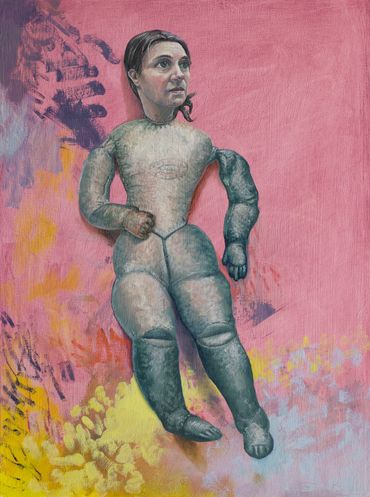Far Away and In Between

















Far Away and In Between
Exhibition Essay
…when the world itself turns unrecognizable, appears to go “mad,” I find myself wondering what the effect is on those who never in the first place experienced a smooth relation between the phenomena of the world and their own minds. Who have always felt an explanatory gap. The schizophrenic. The disassociated. Does it feel like the world has finally, effectively, “come to you”? That what you have been previously told were solely your own personal pathologies and conspiracies have now become general?
-Zadie Smith, Intimations, 2020
Painting is magic: it can fool the eye with illusions of depth while at the same time emphasizing the flatness of its surface. My work highlights this duality with scraps of tape, paper, and photographs that appear to stick to the surface of some paintings. Occupying a seemingly different reality, these trompe l’eoil depictions fool the eye, as upon close inspection they reveal themselves to be entirely painted. Layers of visual confusion challenge the nature and purpose of representation itself — they can only be taken in slowly, with careful looking, by questioning what is seen. This complication echoes the disorientation that I feel lately when confronting a world that appears to have gone “mad.”
My work’s philosophy stems from Magical Realism, in which unexplained or absurd elements appear in an otherwise believable setting. Influenced by years spent living in Mexico, where wall-to-wall vibrant colour is accompanied by stark economic and social injustices, I find that the best way to approximate “truth” is through implausible juxtapositions. Never has this seemed more relevant than now. During this pandemic, as the world appears to have slipped into an alternate reality, Magical Realism feels right at home.
-Jessica Plattner, April 2021